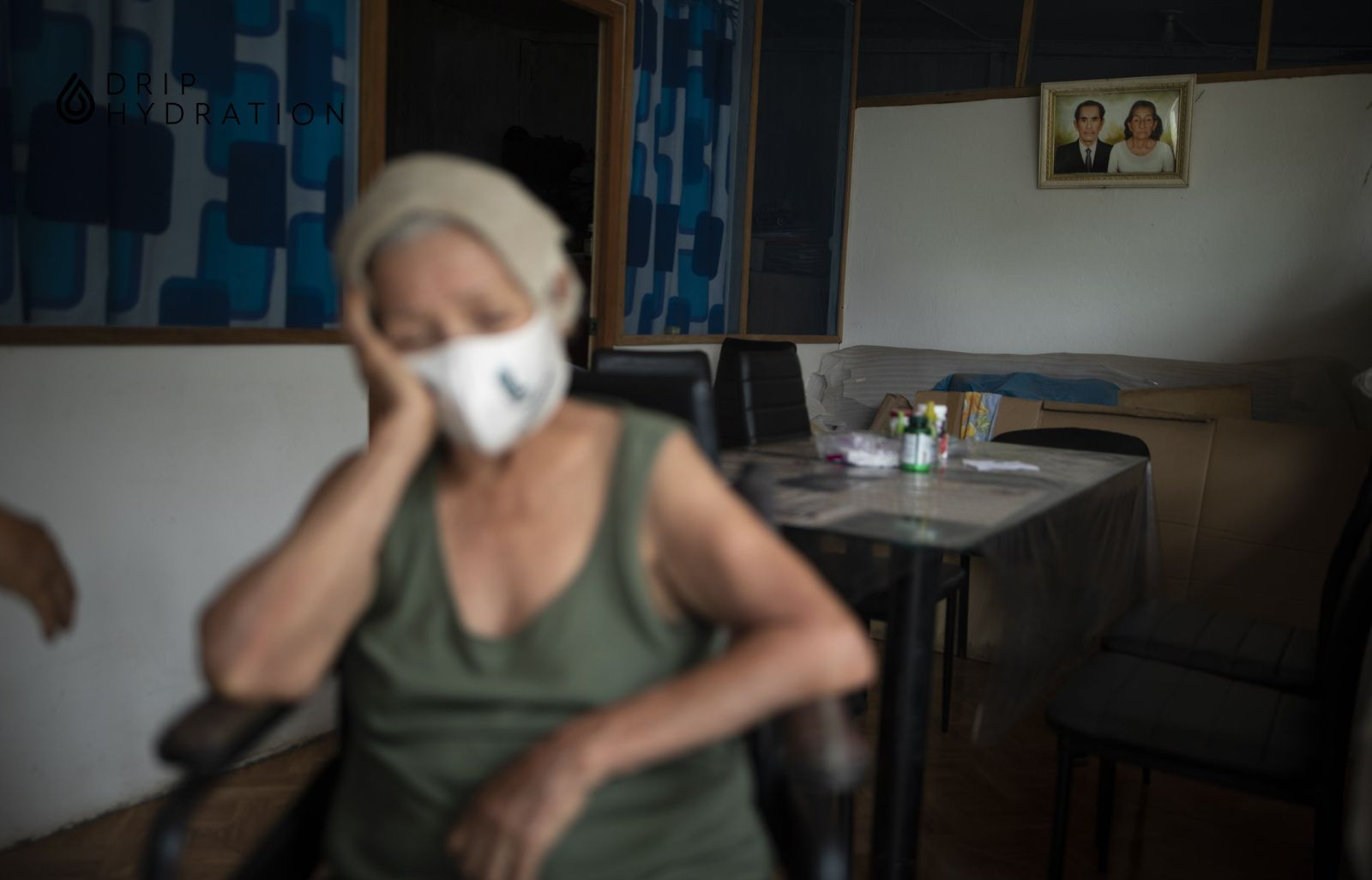Dengue fever is a common disease in Vietnam and other tropical humid countries. To date, the treatment protocol for dengue fever primarily focuses on supporting symptom relief and improving overall health. Patients with dengue fever need to be monitored for vital signs and undergo tests to assess their overall condition, particularly platelet counts. So, how can you tell when you've recovered from dengue fever? What are the signs of recovery?
A lack of fever is one of the signs indicating that recovery from dengue fever is approaching. Therefore, when the body starts to reduce fever and eventually the temperature returns to a stable range of 36.5 to 37.5 degrees Celsius, and there is no fever for at least 24 hours, it is a positive sign. Additionally, symptoms such as headache, joint pain, and muscle pain begin to decrease or completely resolve.

Dengue fever can lead to a decrease in overall body fluid volume, causing patients to urinate less frequently or have significantly reduced urine output. If you’re wondering when you’ll know you've recovered from dengue fever, an increase in urination compared to the previous day is a positive sign, indicating that dehydration symptoms or decreased fluid volume have resolved.
Patients with dengue fever often experience extreme fatigue and loss of appetite. In severe cases, they may refuse to eat or consume only minimal amounts, such as a small spoonful of thin porridge, to suppress hunger due to exhaustion. Thus, one of the signs that suggest when you’ll know you’ve recovered from dengue fever is when the patient can eat normally again and no longer refuses meals.
If you notice that the red spots (petechiae) under the skin are fading and some areas on the skin are no longer visible, this is an indication of recovery from dengue fever. As the patient starts to recover and enters the recovery phase, old rashes will gradually fade, peel off, and disappear, with no new spots appearing.
Blood test results become more stable, showing normal white blood cell and platelet counts and other indices. Gradual absorption of extravasated fluids (such as plasma leakage) occurs within 48 to 72 hours. Patients may experience temporary decreases in heart rate (but hemodynamics remain stable). Overall hemodynamic stability is achieved, and urinary output increases (patients may have difficulty controlling urination during recovery and healing).
While the signs mentioned above can help answer the question of when you’ll know you’ve recovered from dengue fever, both patients and their families should not be complacent until the doctor provides a clear conclusion. During the recovery phase, with signs indicating the approach of recovery, it is important for patients and caregivers to be aware of the following:
As recovery signs appear and health improves, maintaining hydration is crucial to strengthening the immune system and restoring health. To achieve this, patients should increase fluid intake, opting for sugar-free electrolyte drinks, oral rehydration solutions (ORS), and fresh fruit juices to ensure adequate hydration.
Understanding when you’ll know you’ve recovered from dengue fever, it’s important to meet the dietary needs of the patient. Avoid spicy and oily foods; instead, prioritize foods rich in healthy fats and vitamins from fruits and vegetables to keep the body hydrated.
During the recovery phase, monitoring and managing symptoms is crucial for the overall restoration of health. To ensure this, it is vital to maintain a balanced and varied diet to provide essential nutrition for the body. Limit exposure to insects, especially mosquitoes, by using repellents, mosquito candles, and wearing long clothing for protection. Sleeping under mosquito nets can help prevent dengue infection or reinfection with other strains of the dengue virus.
When symptoms such as fever, headaches, and muscle and joint pain appear, it is important to monitor them and use pain relievers and fever reducers as directed by a doctor. Evaluating disease progression and visiting a doctor when unusual signs occur is essential. Strictly adhering to symptomatic control measures after dengue fever will protect health and reduce the risk of recurrence.

Although the reduction of petechiae is a clear sign of recovery from dengue fever, patients still need to monitor their condition and health closely. Dengue fever can significantly lower platelet volume; therefore, understanding when you’ve recovered involves taking measures to prevent bleeding, which can help expedite recovery. Patients can implement simple practices such as increasing fluid intake, maintaining a healthy and nutritious diet, ensuring adequate sleep and rest, limiting high-intensity activities, and avoiding actions that could cause injury to effectively prevent bleeding issues.
When you begin to eat better and feel hungry, it is an indication that you may be recovering from dengue fever. Protein is a vital nutrient essential for restoring health in patients. Meeting a high-protein diet can significantly aid in recovery as signs of improvement emerge.
Increasing the consumption of protein-rich foods such as meat, fish, eggs, beans, nuts, and dairy products will support the recovery process. Additionally, consuming greens and fruits is important for providing necessary vitamins and minerals.
To ensure complete recovery, patients should avoid heavy, hard-to-digest foods, greasy items, sugars, and products containing preservatives. Instead, fresh foods should be chosen, steering clear of processed foods and spicy seasonings to promote easier digestion and faster recovery.
As you begin to identify signs of recovery from dengue fever, such as reduced fever and skin bleeding, and improved blood indices, doctors may allow the patient to return home for monitoring. At this point, maintaining cleanliness in the living environment becomes crucial, especially sleeping under a mosquito net to avoid mosquito bites. To maintain hygiene and safety, consider the following:
Many people mistakenly believe that dengue fever is a one-time illness, providing lifelong immunity. This misconception can lead to complacency once patients start showing signs of recovery. Health experts emphasize that understanding when you've recovered from dengue is essential for health protection and better recovery. There are several common misconceptions that patients and caregivers face when dealing with dengue fever:
Ignoring the need for examination and testing when infected with dengue is a dangerous mistake. Doctors can evaluate the condition and provide appropriate treatment plans. Failing to seek medical attention can jeopardize individual health and potentially spread the virus to others. It is advisable to consult a doctor immediately if dengue fever is suspected.
Fever is a warning sign of more severe symptoms. Knowing when you’ve recovered from dengue involves more than just the absence of fever; other factors such as the ability to eat, maintain urination, and improved blood indices are also important.
There are four strains of the dengue virus, and each infection only provides immunity against one strain. Subsequent infections can be more severe; thus, preventive measures are necessary to avoid recurrence.
Dengue fever is a serious illness that can threaten life. Therefore, providing care for patients who are ill or showing signs of recovery is crucial. Recognizing the signs of recovery from dengue fever is vital, but patients still need careful monitoring to prevent exposure to environments that could lead to reinfection and to continuously track symptoms. Additionally, enhancing the immune system is essential. Alongside a healthy diet and moderate physical activity, consider exploring exclusive American cellular-level health care therapies.
These therapies involve intravenous infusion of various micronutrients aimed at replenishing minerals lost after dengue. This method also serves to hydrate, detoxify, and improve cellular health, thus effectively boosting the immune system and preventing disease.
18
Useful article?
Useful article?
18
Useful article?